
Winterland Ballroom was an ice skating rink and music venue in San Francisco, California, United States. The arena was located at the corner of Post Street and Steiner Street. It was converted for exclusive use as a music venue in 1971 by concert promoter Bill Graham and became a popular performance location for many rock acts. Graham later formed a merchandising company called Winterland Productions, which sold concert shirts, memorabilia, and official sports team merchandise.

The Hammerstein Ballroom is a 12,000-square-foot (1,100 m2) ballroom located within the Manhattan Center at 311 West 34th Street in Midtown Manhattan, New York City. The capacity of the ballroom is dependent on the configuration of the room; it seats 2,500 people for theatrical productions and musical performances, and several thousand for events held within a central ring. The floor of the ballroom is flat. The two main balconies – which are unusually close to the ground and gently sloped – seat a total of 1,200. The third balcony has been stripped of seats and is not used.

The Bowery Ballroom is a New York City live music venue located at 6 Delancey Street in Manhattan's Bowery neighborhood.
Richard Kimmel is a New York City-based theatre director, writer, and theatrical producer. He is executive director of The Box, a venue for theater, music, and nightlife in the Lower East Side of Manhattan, and artistic director of Cannon Company, a performing ensemble.

The Manhattan Center is a building in Midtown Manhattan, New York City. Built in 1906 and located at 311 West 34th Street, it houses Manhattan Center Studios, the location of two recording studios; its Grand Ballroom; and the Hammerstein Ballroom, a performance venue. In 1976, the building was purchased by its current owner, the Unification Church, for $3 million. Some of the enterprises residing in the building include: Telemundo, Macy's, CFDA, WeWork, Facebook, iHeart Media, Samsung, American Heart Association, Robin Hood, FX Network, Endeavor, MAC Cosmetics, Viacom, SiriusXM, NBA, NBC Universal, Masterbeat, Broadway Cares Equity Fights AIDS.
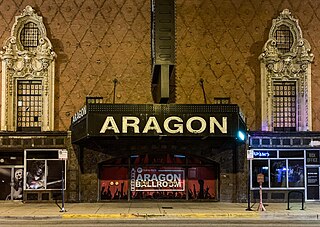
The Byline BankAragon Ballroom is a ballroom turned event space located in Chicago in the Uptown neighborhood, approximately 5 miles (8 km) north of Downtown.
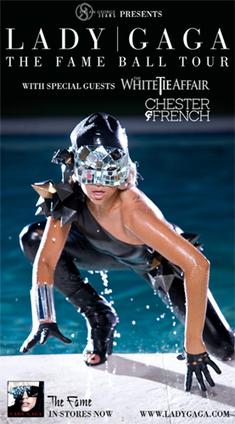
The Fame Ball Tour was the debut concert tour by American singer Lady Gaga, in support of her debut studio album The Fame (2008). North American shows began in March, followed by dates in Oceania and a solo trek through Europe. Dates in Asia soon followed, as well as two performances at England's V Festival and two shows in North America that had been postponed from April. Gaga described the tour as a traveling museum show incorporating artist Andy Warhol's pop-performance art concept. Tickets were distributed for charity also. Alternate versions of the show with minimal variations were planned by Gaga to accommodate different venues.
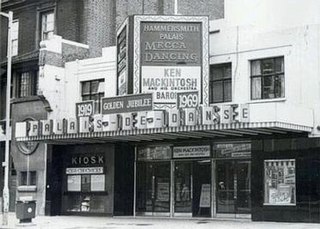
The Hammersmith Palais de Danse, in its last years simply named Hammersmith Palais, was a dance hall and entertainment venue in Hammersmith, London, England that operated from 1919 until 2007. It was the first palais de danse to be built in Britain. In 2009, it was named by the Brecon Jazz Festival as one of twelve venues which had made the most important contributions to jazz music in the United Kingdom.
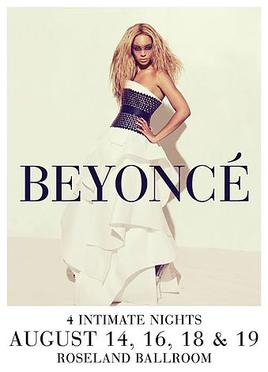
4 Intimate Nights with Beyoncé was the second concert residency by American recording artist Beyoncé. Held during four non-consecutive nights in August 2011 at the Roseland Ballroom in New York City, the concerts were part of Beyoncé's campaign in support of her fourth studio album 4 (2011). All the songs on the standard version of the album, excluding "Start Over", were performed by her to a standing room-only audience of 3,200. Beyoncé also sang some of her previous hits from her three prior studio albums as well as songs she recorded with former girl group Destiny's Child in the 1990s and early 2000s. Wearing a linky gold sparkling mini-dress, she was backed by four female dancers and a 20-piece female band including a horn and orchestra section.

Live at Roseland: Elements of 4 is a video album by American recording artist Beyoncé. It was released on November 21, 2011, through Parkwood Entertainment and Columbia Records. The album features a concert film which was filmed during Beyoncé's 4 Intimate Nights with Beyoncé revue, held at the Roseland Ballroom in New York City between August 14–19, 2011.

Colleen Martin, known professionally as Lady Starlight, is an American DJ and musical performer. Based in New York City's Lower East Side, she is best known for her numerous collaborations with Lady Gaga. Starlight released her debut extended play, Untitled, in 2017. The following year, she released her second extended play, Which One of Us Is Me?. Besides her own performances, she also sometimes performs with Surgeon.
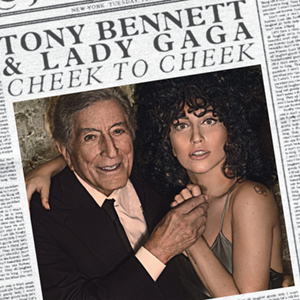
Cheek to Cheek is the first collaborative album by American singers Tony Bennett and Lady Gaga, released on September 19, 2014, by Columbia and Interscope Records. It is Bennett's fifty-eighth studio album, and Gaga's fourth. The two first met at the Robin Hood Foundation gala in New York City in 2011, and later recorded a rendition of "The Lady Is a Tramp" together, after which they began discussing plans of working on a jazz project. Cheek to Cheek consists of jazz standards by popular composers such as George Gershwin, Cole Porter, Jerome Kern, and Irving Berlin. It was inspired by Bennett and Gaga's desire to introduce the songs to a younger generation, since they believed these tracks have a universal appeal.

Artpop is the third studio album by American singer Lady Gaga. It was released on November 6, 2013, by Streamline and Interscope Records. Gaga began planning the project in 2011, shortly after the launch of her second effort, Born This Way. Work continued until 2013 while Gaga was traveling for her Born This Way Ball tour and recovering from surgery for an injury she had sustained while touring. Gaga described Artpop as "a celebration and a poetic musical journey". It displays an intentional "lack of maturity and responsibility" by comparison to the darker and anthemic nature of Born This Way.
"Sexxx Dreams" is a song by American singer Lady Gaga from her third studio album, Artpop (2013). The song was written by Gaga, Paul "DJ White Shadow" Blair, Martin Bresso, and William Grigahcine, and produced by Blair, Gaga, Nick Monson, and Dino Zisis. Inspired by Gaga's erotic fantasies and dreams, the song went through a number of changes to make it understandable for the singer's team, while keeping a constant chorus. A synthpop song, Gaga promoted the title by using a number of hashtags involving the name in her social media accounts, and at one point was considered for a single release from Artpop.
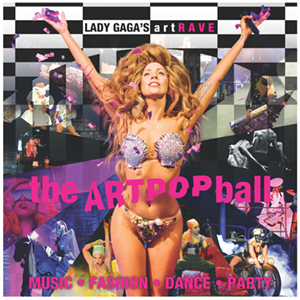
ArtRave: The Artpop Ball was the fourth headlining concert tour by American singer Lady Gaga. Supporting her third studio album Artpop (2013), the tour ran from May 4, 2014, to November 24, 2014. The tour dates included cities where Gaga had canceled shows of her previous Born This Way Ball tour after suffering a hip injury. The ArtRave tour was preceded by a performance at the South by Southwest music festival, which drew controversy due to a segment where an artist vomited on Gaga, and a seven-day residency at the Roseland Ballroom in Manhattan, New York.

"G.U.Y." is a song by American singer Lady Gaga from her third studio album, Artpop (2013). She co-wrote and co-produced the song with Zedd. It debuted on French radio as the album's third and final single on March 23, 2014. "G.U.Y." was developed while Gaga was touring with her Born This Way Ball, and was recorded a number of times for the final version. It is an EDM track containing elements of industrial, contemporary R&B, and house music whose lyrics address a number of subjects like sexual dominance, submission, and gender roles.

Lady Gaga Live at Roseland Ballroom was the first concert residency by American singer Lady Gaga. Performed at the Roseland Ballroom in Manhattan, New York, the residency began on March 28 and concluded on April 7, 2014, after completing seven shows. It was the final event hosted by the venue after it was announced that it was being closed down and being replaced with a 42-story skyscraper. Gaga revealed that Roseland was the only venue in New York City that she had never played, although she had visited there previously to watch shows. A poster announcing the event was released, showing an old image of Gaga taken before the time she became successful as a recording artist.

Tony Bennett and Lady Gaga: Cheek to Cheek Live! is an American concert television special featuring live performances by Tony Bennett and Lady Gaga in support of their collaborative studio album, Cheek to Cheek, released in September 2014. It was held at the Rose Theater of Lincoln Center for the Performing Arts in July following the announcement of the album's release, and was aired on PBS on October 24, 2014, as part of the network's Great Performances series. The concert was watched by an audience consisting of invited guests and students from New York schools. Bennett and Gaga were joined on stage by a 39-piece orchestra and jazz musicians associated with both artists. A number of costumes were worn by Gaga, provided by designers including Roberto Cavalli, Michael Costello, Mathieu Mirano, Valentino as well as David Samuel Menkes. The special received one nomination at the 67th Primetime Emmy Awards.
The Tower Ballroom was an attraction in Birmingham, West Midlands, England, which opened to the public in March 1876 and closed permanently in 2017. It is located beside Edgbaston Reservoir. Across its history, The Tower Ballroom hosted a wide variety of events, including roller-skating and ice-skating, dancing, discos, weddings, boxing matches, theatre, and musical performances including The Smiths and New Order.




















